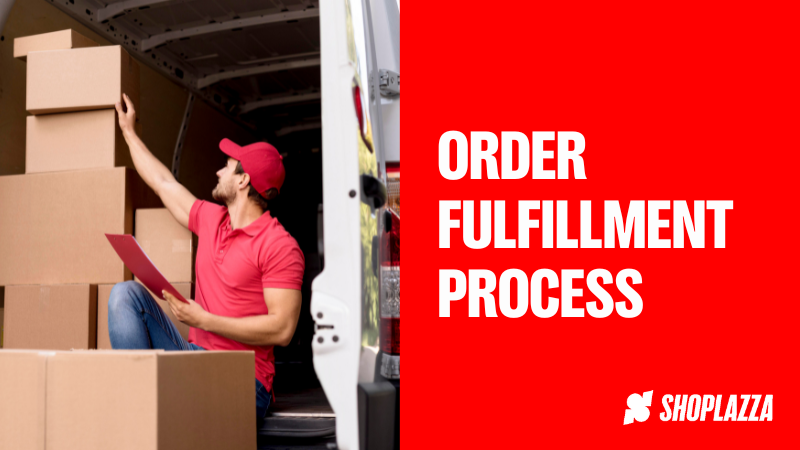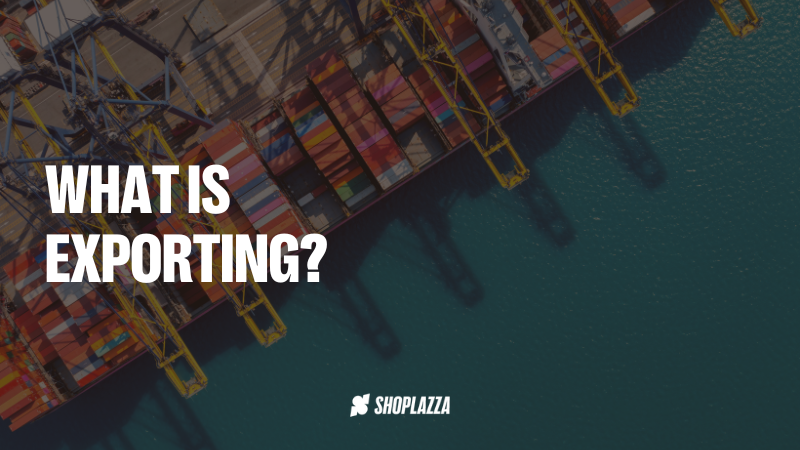
As an entrepreneur, understanding logistics has many benefits. It is essential for your company's success as it involves managing the flow of your goods from one point to another—in your case, your clients’ houses.
While starting your own online business, you must be concerned about shipping, since you’re interested in quickly delivering the best product to your customers, reducing costs and increasing your profit margin.
In this context, gaining a comprehensive understanding of this topic is crucial for entrepreneurs looking to establish or grow their businesses—and this means you!
What is logistics?

Logistics is the process of planning, organizing, and coordinating the transportation, storage, and distribution of goods, services, and even people from one place to another, efficiently and effectively.
It involves the management of the flow of goods from their point of origin to their final destination, ensuring that they’re delivered to the right place, at the right time, and in a proper condition!
It doesn’t matter if you’re selling crafts or building a plant business, logistics is a crucial part of selling goods since you must meet your customer’s needs quickly, building a reputation for your business to conquer other customers.
It can impact directly your customer service, so make sure everything goes well with your planning. In order to start shipping products efficiently and avoid delivering defective products, you definitely have to discover how to amplify your business logistics strategy.
Logistics components

Logistics includes a wide range of activities for a company; delivering a product to the end consumer is just the edge. If you work in ecommerce, you're probably involved in part of these activities without even noticing.
Some of the components logistics typically include and are truly important to your logistics process are:
- Transportation: The movement of goods and services from one location to another, including the selection of transportation modes (for example, air, sea, road, rail) and the routing of shipments.
- Warehousing and storage: The management of inventory and storage facilities to ensure the availability of goods when needed and to protect them from damage or theft.
- Inventory management: Monitoring and controlling stock levels to ensure the right amount of goods are available at the right time while minimizing excess inventory and associated costs.
- Order fulfillment: The process of receiving and processing customer orders, picking and packing products, and arranging delivery.
- Materials handling: The movement of goods within a warehouse or distribution center, including loading and unloading, picking and packing, and sorting and arranging.
- Packaging and labeling: The design and labeling of product packaging to protect and promote products during transportation and storage.
- Security and compliance: The management of security and compliance measures, including customs regulations, safety regulations, and international trade requirements.
Managing these logistics components is essential for the smooth operation of a supply chain. Ensuring end customers receive their orders through timely and reliable delivery will improve their trust in companies' products and services.
Not sure if logistics is your thing? Check out seven digital product ideas and how to sell them online! 🚨
Supply chain management

Another essential subject when discussing logistics is supply chain management (SCM). The SCM refers to coordinating and controlling all activities involved in the production, procurement, transformation, and distribution of goods and services, from sourcing raw materials to delivering finished products to customers.
The supply chain is constantly used by manufacturing companies that have a lot of processes while producing their products before reaching the end user.
Logistics x supply chain

No, they’re not the same! Logistics and supply chain are part of the same family, but they have some different aspects that you must be aware of.
Logistics is an element of the supply chain, involved in the flow of goods and services from one point to another. In contrast, supply chain management refers to coordinating and managing all activities involved in a production!
For example, suppose you want to build an online store with Shoplazza to sell jewelry. In that case, the steps involved in meeting the customer's demand—from the moment he buys something to the delivery—are part of logistics, because we’re only talking about the transportation of this specific good.
On the other hand, supply chain means all the logistics involved in your other activities. Suppose you’re making enamel pins to sell. In that case, you need to be involved not online in delivering a product, but in procuring, producing and transforming your product to distribute it.
To summarize, logistics focuses on the physical movement and storage of goods. At the same time, supply chain management takes a broader view of the entire supply chain network, including suppliers, manufacturers, distributors, and customers.
Both processes are focused on one thing: ensure that your target audience can access your products.
Types of logistics

There are a lot of ways to make logistics work. Logistics strategy can be different from one company to another based on companies’ needs. If you don’t want to be involved with logistics management on a daily basis, I suggest you search for a complete dropshipping guide. However, there are four main types of logistics that you must know to have a successful business.
Inbound logistics
Inbound logistics manages the movement and storage of raw materials, components, and other goods from suppliers to the manufacturing or production facility, ensuring the smooth functioning of the production process.
It involves procurement, transportation, warehousing and inventory management. Its goal is to ensure that suitable materials are delivered to the manufacturing facility at the right time and quantity. This requires effective coordination and communication with suppliers to meet the production schedule and provide materials as needed.
Using inbound logistics is a way to manage costs, improve efficiency and enhance customer satisfaction. Businesses can maintain enough stock without incurring unnecessary expenses by optimizing the transportation and storage of raw materials.
Outbound logistics
Outbound logistics is one of the main types of logistics that refers to the transportation management and storage of finished goods from the production or manufacturing facility to the end customer or the point of sale.
Outbound logistics involves transportation, warehousing and distribution, ensuring the delivery of products to customers on time and in a suitable condition. As an e-business owner, outbound logistics is integral to your daily activities since you provide finished goods to address a customer demand.
Reverse logistics
Reverse logistics refers to returns management of a company, ensuring the return flow of products from the customer to the seller. The reverse logistics process is essential to a business that wants to reduce costs, handle defective or damaged products, manage product recalls and deliveries refusals as part of the return process.
As an essential logistics process, reverse logistics plays a massive part in industries with a high rate of product returns or where products have a short lifecycle.
The returns process has different stages to meet customer needs, including identifying returned products, transporting products back to the point of origin, sorting and inspecting, repairing or refurbishing and disposal or recycling.
Is impossible to meet customer needs in every delivery, so sometimes products may be returned to the manufacturer or retailer for repair or replacement. In contrast, in other cases, they may be sent to a third-party provider to be fixed.
Reverse logistics processes are an increasingly important area to business since customers become more environmentally conscious and demand more sustainable practices. However, not all companies know the importance of a solid reverse logistics plan to reach more significant achievements with green marketing strategies.
Third-party logistics
Third-party logistics (3PL) is when a business outsources logistics management to a third-party provider. 3PL providers have a competitive advantage since they can offer their expertise, technology, and resources to help companies to optimize their logistics operations.
Providers offer their logistics services at lower costs, including transportation, warehousing, inventory management, packaging and distribution, and use their expertise to manage logistics activities on behalf of their clients.
Maintaining a logistics process can sometimes be expensive for a company, so you must consider hiring a 3PL provider to secure your budget, reduce capital investment and improve scalability.
💸 Improve decision-making by learning how to calculate the return on your investment!
In conclusion, what is logistics?

So that’s it! Logistics is a critical aspect of modern business operations, encompassing a range of activities essential for the efficient and effective movement and storage of goods, services and people.
It can be broadly classified into four main types: inbound logistics, outbound logistics, reverse logistics and third-party logistics. Each class plays a crucial role in the supply chain management process and requires careful planning, coordination, and execution to ensure that goods and services are delivered to the right place, at the right time, and in a suitable condition.
If you want to reach the next level in your business activities, you need cost-effective logistics management from inbound logistics to reverse logistics process. We’re sure these tips will help you add value to your products and avoid delivery failure!


